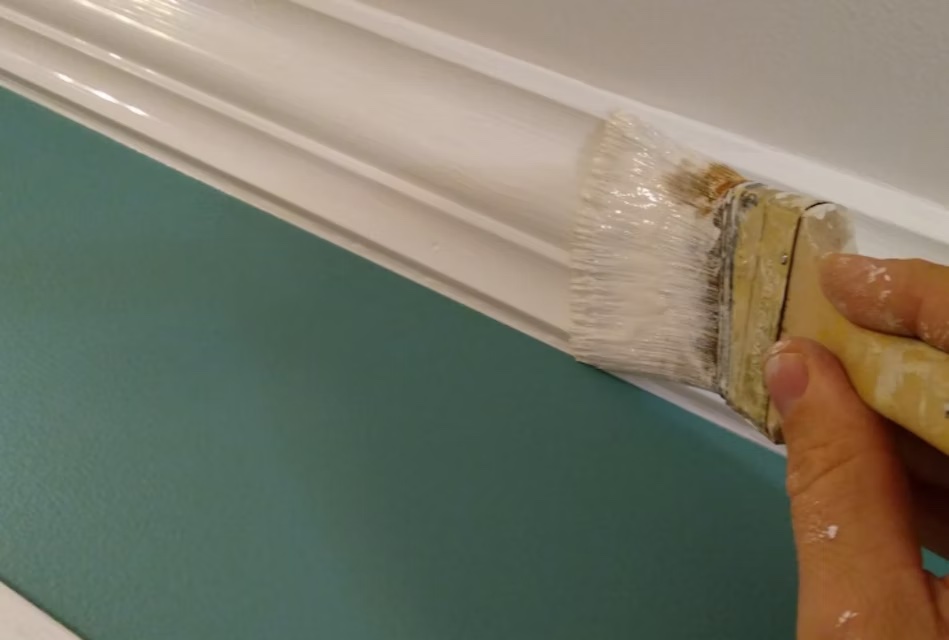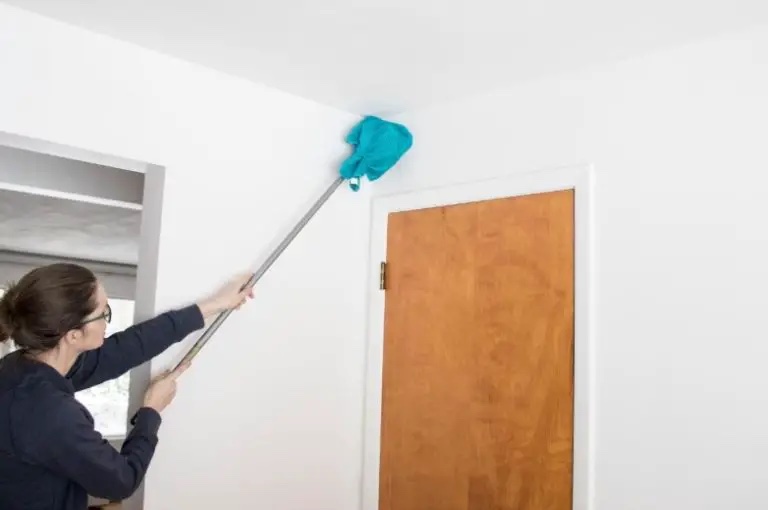
Home Maintenance Tasks For Your February To Do List
Tired of winter and eager for spring? Chalk it up to the February blues, and know that you’re not alone. Some days this month may be so sunny and bright that it would be a shame not to head outdoors. Go ahead. There’s lots to do. But when it‘s too chilly to face the outdoors, don’t punish yourself; there’s plenty to accomplish inside as well, and you might as well tackle those chores before spring really does arrive.

Prune
If winter storms broke branches in your trees or shrubs, a warmish February day when rain is not in the forecast for at least 24 hours is a great time to tidy up. (Pruning just before a rain increases the chance of the tree becoming infected through those fresh wounds.) And while you have the clippers or pruning saw out, also take a look at other trees and shrubs that might need trimming for shape or fruit production. When branches are bare, it’s easier to identify ones that are crossed or diseased. But be careful if you have apple or pear trees, which tend to send up vertical water sprouts or suckers. Heavily pruning those now can cause the tree to send up even more. Clip off some of the spots, then remove more during the summer. Your local gardening store or your state’s extension service can give advice tailored to your area.

Tune up outdoor features
A warm afternoon also offers an opportunity to repair a sagging gate, reset a wobbly stepping stone or attend to another outdoor repair that isn’t too involved. If you have a wooden gate that drags on the ground and that no longer latches easily, install a tensioning system. Screw on the corner blocks, with one fitted over the top of the hinge side of the gate and the other over the bottom of the latch side. Hook the turnbuckle (opened fully) to the top block, and thread cable between the bottom block and the cable clamp. Attach the cable clamps with the cable pulled as tight as possible. Then tighten the turnbuckle until the sagging end of the gate lifts and the latch works correctly.

Prepare to mow
Lawn-mowing season might not begin until March or even later, depending on where you live. But if you wait until then to check whether your mower, string trimmer and other gear are in good shape, you will probably encounter a backup at repair companies. Save yourself the angst by making sure everything’s in working condition; if it isn’t, get the repair done now. Also check for a dull or chipped mower blade. There are plenty of YouTube videos that show how to sharpen a mower blade. If it’s heavily nicked, though, replace it. To get an exact match, take the old blade with you when you shop.

Repair walls, touch up paint
Cold days present the chance to repair dings and scuffs on painted walls and trim. Scuffs, crayon marks and grime might wipe off if you use a damp melamine-foam sponge, such as the Mr. Clean Magic Eraser. If the paint still looks dingy, or if there are dents that need filling, try touching up the worst areas. After repairing, brush drywall primer (not primer formulated to block stains) over the dried patches. Then repaint the area.
The biggest challenge, especially if the paint is semi-gloss or glossy, is to get the sheen to match, even if you have leftover paint. A customer service representative from Sherwin-Williams recommends mixing 9 parts paint with 1 part water. Apply this diluted solution starting at the center of the patch or area you are touching up. Brush or roll paint out from there, so the paint winds up thinnest at the edges. The touched-up areas might look slightly different at first, but wait a day, then assess. Fully dry, the new paint will probably blend in quite well. If you still don’t like the look, you can repaint the entire thing; February is a much better time for interior paint projects than when the weather is hotter and more humid. Check the label, but most interior paints cure best when the temperatures of the air and the surface are between 50 and 85 degrees.

Clean closets
There are a few good reasons to give closets a thorough cleaning once a year. For starters, you can purge what you never wear and create space, so the clothes you keep don’t wrinkle when you stuff them in. You can also check for fabric moths and eliminate them before they do much damage. Inspect any wool or leather coats you plan to keep for cobweb-like matting or ½-inch-long cylinders wrapped in fibers. (These are signs of the two types of moth larvae that destroy protein-based materials, such as wool or leather.)
Brush or vacuum off the webbing or cylinders, which have larvae inside, or tumble the clothing in a dryer. Wash or have the items dry-cleaned before you rehang them, because fabric moths prefer fibers that also contain food spills or oily deposits from skin contact. And, of course, vacuum the closet well before you refill it. If you have found evidence of fabric moths, pay extra attention to crevices and corners, so you can remove all the cocoons.

Clean the medicine cabinet
Here, too, it makes sense to take everything out, clean the space, then put back only what you still need. But if you find medications that are expired or that you no longer take, be careful to dispose of them properly. By far the best option is to take them to a drug takeback location, such as a pharmacy or police department. The Drug Enforcement Administration has an online tool for finding one near you; you can also search through Google Maps, which may work better from a cellphone.
If you can’t find a feasible location, the Food and Drug Administration has what it calls a “flush list” of medicines and products (such as a fentanyl patch) that should be flushed down a toilet immediately, because they will probably be misused and are so potent that a single dose could kill a child or pet. Yes, some flushed drugs might get into waterways. But the FDA says that risk is small compared with the great risk these drugs pose to people in a household who might misuse them, and to the amount of drugs that wind up in waterways anyway because they have passed through humans. Lotions, cosmetics and similar products you no longer use should go in household trash. To dispose of insect repellent with DEET, check out your community’s options for household hazardous waste.

Get out the duster
When sunshine streams in through a window on a winter day, it’s easy to see and whisk away cobwebs that go unnoticed in other light conditions. But the lowlight days are fleeting. To banish cobwebs, get a duster with polyester fibers (they attract dust with electrostatic action) and a handle that’s long enough to reach ceilings. You can also pin an electrostatic dust cloth around a broom or reach for a vacuum brush with a wand extension. Whatever you use, clean the highest areas first and work your way down. Besides the walls, dust off fan blades, blinds and lampshades. Finish by vacuuming furniture, then the floor.

Check fire extinguishers
If you have a fire extinguisher, make sure it will work when you need it. Most extinguishers sold for home use are not rechargeable, but they do gradually deplete over time and need to be replaced every 12 years — or even earlier if the gauge reads empty. While you’re checking, reread the instructions, so you’re ready if a fire does occur. And if you don’t have extinguishers, this is a good time to add them. The kitchen and the garage are prime locations. Lightweight extinguishers are less expensive but have more limited capacity. For example, the Kidde basic-use fire extinguisher with easy mount bracket weighs less than four pounds but sprays out a dry chemical for just eight seconds. The Kidde full-home extinguisher weighs 8.25 pounds and discharges for 13 seconds.

Wipe down the bathroom
Tubs and showers keep us clean, but over time, the mist they produce and the bits of soap carried in the droplets lead to dark, dingy areas on the ceiling and walls. What you’re seeing is mildew, and it can probably be wiped off easily with nothing more than warm water and a clean cloth. Don’t focus on “killing” the mildew with bleach or other cleaners. There are always more than enough mold spores floating around in the air to result in another infestation when conditions are right. Instead, focus on making the conditions inhospitable. That means removing the food source (soap residue) and lowering the humidity by running a fan after each shower or bath. You might need a ladder to reach the ceiling. Also wipe off the grill for the fan and clean any light fixtures.
Source: https://www.washingtonpost.com/home/2023/02/01/home-maintenance-checklist-february/

